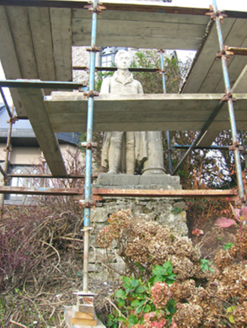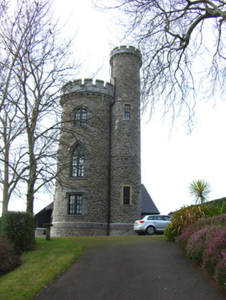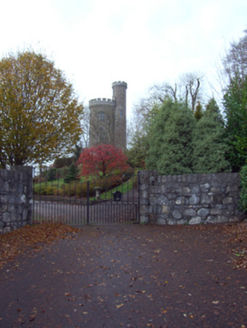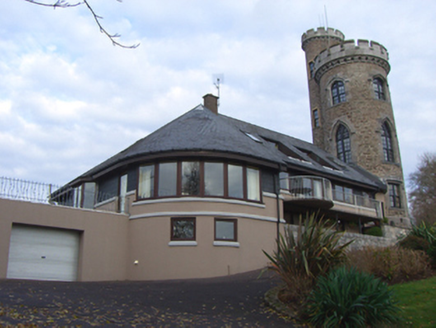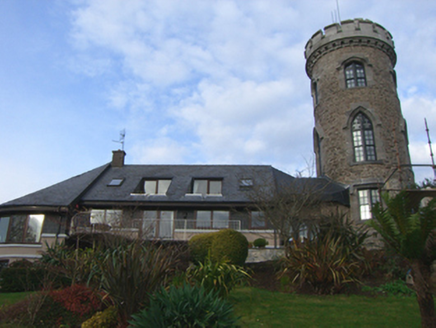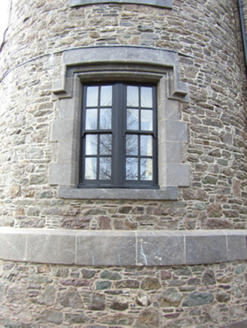Survey Data
Reg No
20907523
Rating
Regional
Categories of Special Interest
Architectural, Artistic, Historical, Social
Original Use
Folly
Date
1840 - 1850
Coordinates
174305, 73002
Date Recorded
30/11/2007
Date Updated
--/--/--
Description
Freestanding single-bay three-stage tower, built 1843-6, on a circular plan with single-bay four-stage turret on a circular plan. Derelict, 1983. Repointed coursed rubble stone walls originally rendered on margined tooled cut-limestone chamfered cushion course on repointed coursed rubble stone battered base with margined tooled limestone ashlar corbelled battlements on ogee consoles having roll-topped coping. Square-headed window openings in bipartite arrangement (first stage), margined tooled cut-limestone block-and-start surrounds having chamfered reveals with hood mouldings framing replacement windows. Pointed-arch window openings in bipartite arrangement (second stage), margined tooled cut-limestone block-and-start surrounds having chamfered reveals with hood mouldings framing replacement windows. Tudor-headed window openings in bipartite arrangement (top stage), margined tooled cut-limestone block-and-start surrounds having chamfered reveals with hood mouldings framing replacement windows. Set in landscaped grounds with cast concrete statue on coursed rubble stone battered pedestal.
Appraisal
The Father Mathew Tower, 'erected at the sole expense' of the merchant tailor William O'Connor (d. 1849) of Mount Patrick (see 20907525), commemorates Theobald Mathew (1790-1856) and is one of several monuments to the temperance reformer in Ireland which include a statue (1864) in Saint Patrick's Street in Cork (see 20512910) and a later statue (1892) in O'Connell Street in Dublin (see 50010613). The Father Mathew Tower is a good example of Gothic Revival architecture and the mullioned and pointed openings, and the corbelled battlements, are all finished in a finely chiselled cool-grey limestone. A statue of Theobald Mathew stands on a pedestal in the shadow of the tower and is an early example of cast concrete. The Father Mathew Tower has traditionally been attributed to George Richard Pain (c.1793-1838), owing to similarities with the Blackrock Castle (see 20864028), but, erected 'to celebrate the kind reception given to Father Mathew by the right-minded Londoners in the year 1843 upon the occasion of his first Temperance Visit' (Illustrated London News 21st November 1846, 327), that attribution is incorrect and a report on the laying of the foundation stone (9th November 1843) mentions 'the stone having been lowered by pulleys over its bed, and the several coins of the realm, &c., deposited therein, Mr. Howard, the architect, from whose design the building is to be erected, led Captain [John Caulfield] Irwine...to the north-east angle of the site [and] presented him with a massive silver trowel' (The Illustrated London News 18th November 1843, 322): the 'Mr. Howard' is believed to be Robert Howard (1803/5-51) of Camden Quay.
